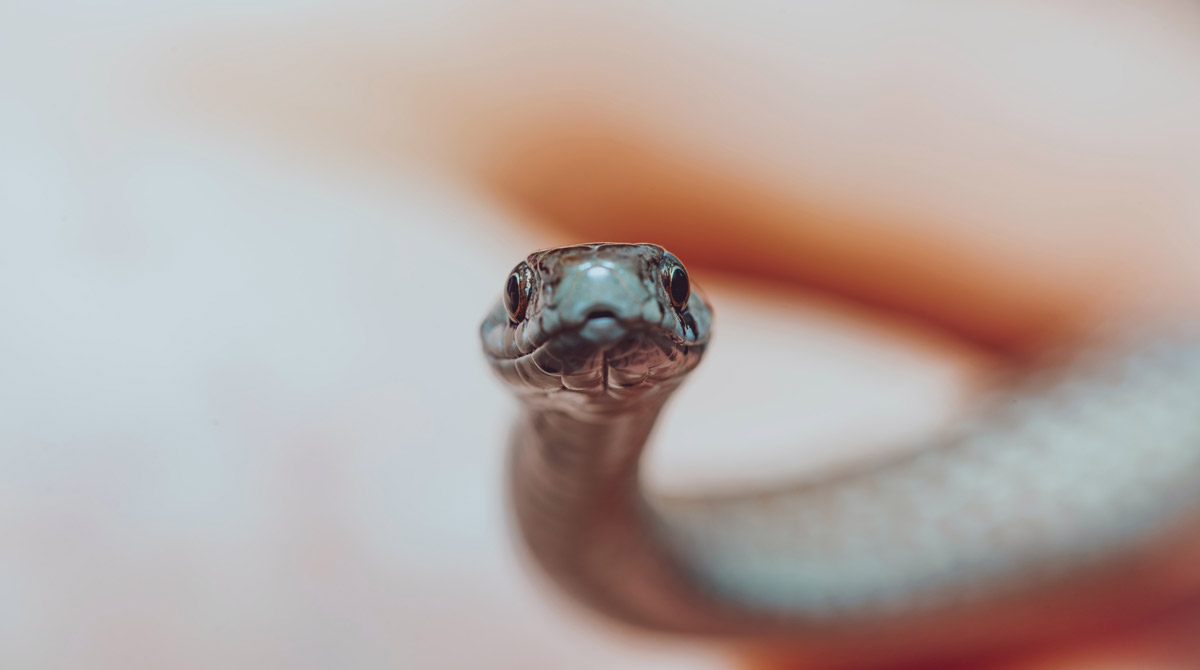

This article was written by Connor, one of our founding editors. Connor is a full-time travel and lifestyle photographer with extensive experience in the outdoors industry.
Do you want your snake to be healthy and happy? Choosing the best snake bedding, whether it’s for your ball python, corn snake, or anything else, can be confusing at best. There is a wide variety of options available. Some of these can be good, bad, or potentially deadly for snakes.
It a misconception that all reptiles can use the same sort of bedding. Snakes can, in fact, safely use a lot of different types of bedding such as newspaper, AstroTurf, wood shavings, or soil just to name a few.
In this guide, we’re first going to cover some of the best snake bedding products you can get. After the product reviews, we’ll dive a bit deeper into some of the dos and don’t of snake substrate and why you should choose certain types over others.
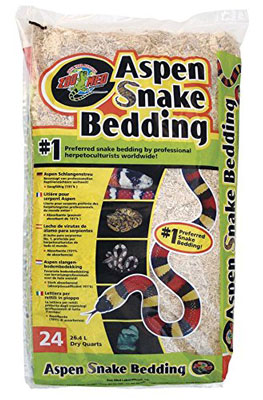
Zoo Med is one of the most popular brands of snake and reptile equipment. It’s for that reason that we’re including more than one of their substrate products, with the first being aspen.
The Zoo Med aspen bedding is 191% absorbent and odor-free, making for a pleasant snake terrarium. This is the ideal substrate for snakes that love to burrow, providing a natural style of bedding,
Furthermore, it helps to keep the terrarium dry by absorbing moisture well if any water is spilled. This helps to prevent bacteria build-up and odors. This aspen lasts well, too. Although it is recommended that you change it every 30-60 days, it can actually last longer if you take good care.
There are several different buying options; you can buy as little as 8 quarts or as much as a four-pack (24 quarts).
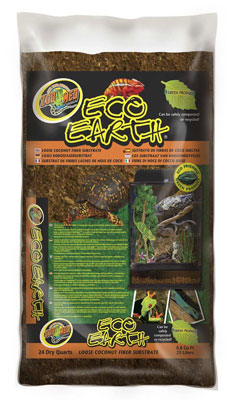
Another fantastic product from Zoo Med is Eco Earth, a high-quality loose coconut fiber substrate. This type of substrate is excellent for snakes that need to be kept at a specific humidity and as a result, it needs to be kept slightly damp for it to work properly.
You should take the time to get to know the most suitable level of humidity for your snake and either dampen the substrate further or replace it to get it right. Additionally, this type of bedding is really good for burrowing snakes. Ideally, you’ll build up a layer of the coconut fiber up to 2 times the height of your pet so that it has plenty of room to burrow.
Producing a sort of earthy smell, this choice of the substrate provides a very natural looking bedding for your snake terrarium.
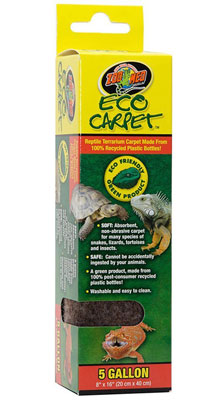
The final Zoo Med product we’re taking a look at is the Eco Carpet. This is a soft, non-abrasive carpet that is ideal for making your snake feel comfortable. One of the biggest benefits of using the Eco Carpet is that nothing can be ingested.
The carpet is absorbent and unlike other types of substrate; it doesn’t have any particular smell which makes it a pleasant option. Moreover, it’s one of the easiest substrates to clean and works best if you have a couple of pieces in rotation.
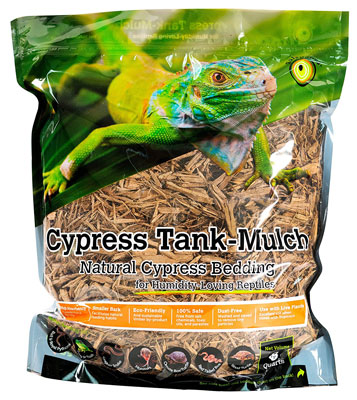
People love to use cypress mulch because it is naturally moist and is highly absorbent. Both of these qualities help it to control your terrarium’s humidity levels so that it suits your snakes.
What’s great about this specific product is that it has been cleaned so that there are no small particles that could pose a risk for your snake. Also, there are no harmful chemicals or oils used with the cypress mulch.
The only niggle we’ve got with this is that the bag is fairly small and unless you have a tiny terrarium, you’re going to want to purchase more than one bag at a time. Other than that, this is easily one of the best snake substrates for humidity.
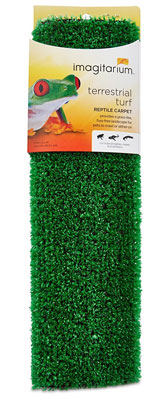
Simply put, this is a mess-free and easy option when it comes to reptile substrate. It works, of course, similarly to the Zoo Med carpet as it is easy to clean and provides natural-looking bedding.
You should choose fake turf/carpeting like this only if your snake doesn’t burrow. If your snake is of the burrowing kind, then you should consider another option, like aspen, coconut fiber, or cypress mulch.
This carpet can be rinsed with cold water and reused and again, it is useful if you have more than one of them in rotation so that you can clean one as you’re using the other.
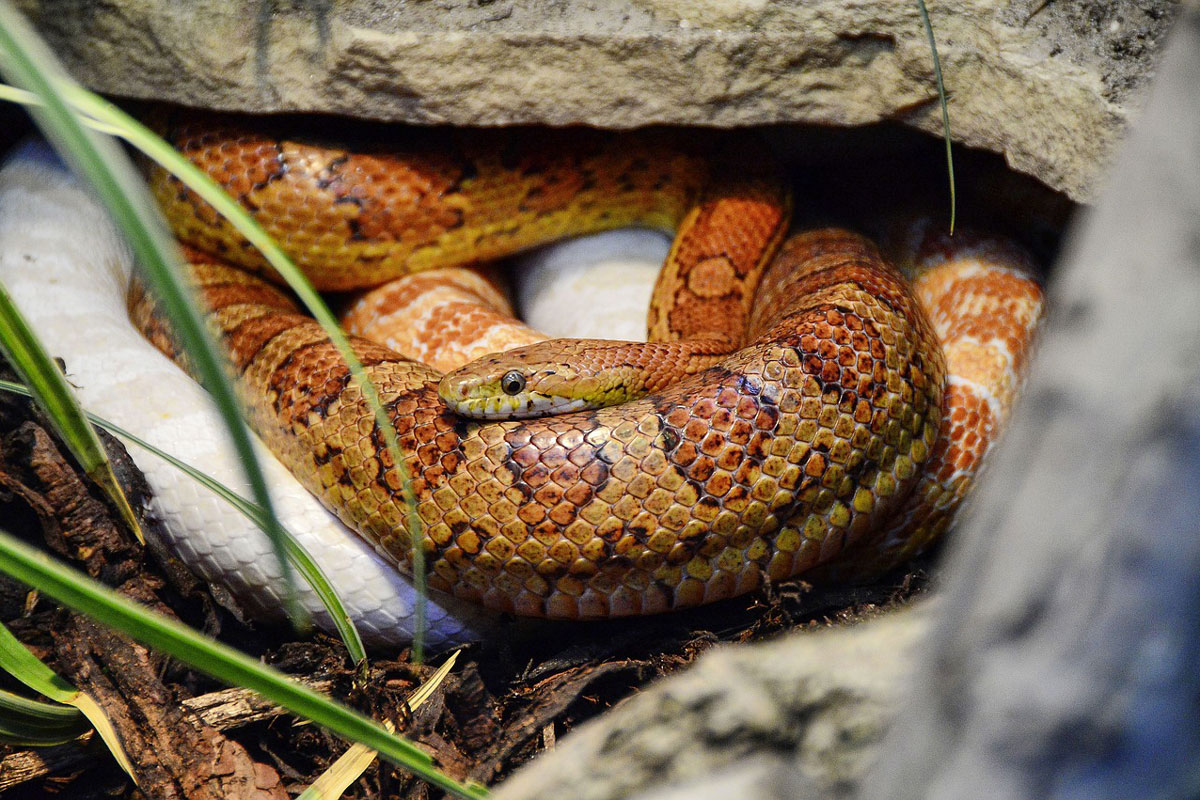
Now that we’ve shown you some of the top-rated snake substrate products available for you to buy, we’re going to take a closer look at each type. We’re also going to look at why you actually need substrate.
Primarily, your snake needs good bedding in order to absorb feces and moisture. A substrate or bedding, which can absorb moisture will help to keep your snake’s enclosure free of germs and funny smells caused by bacteria.
Firstly, it is important to say that people have contradicting opinions on what not to use. We’ve done our fair share of reading on the topic and can only advise based on the information we have read.
The types of potentially dangerous snake bedding which come up time and time again are cedar, bark, sand, and gravel. Cedar shavings and certain bark, like pine, are toxic for snakes due to their aromatic compounds. These irritate snakes’ skin and, even worse, are known to degenerate cells in the respiratory tract which can lead to a variety of infections.
Sand and gravel, although possibly not quite as dangerous, are also generally advised against. Both aren’t particularly effective in absorbing moisture, which means that bacteria can build up easily and cause a nasty smell. The build-up of bacteria can also lead to infection.
Sand can be easily ingested accidentally by snakes which can cause internal injuries in the digestive tract. Not only can it be ingested but it can also be an irritant to a snake’s skin and eyes when they’re burrowing. The same is true for gravel.
Aside from simply being able to absorb moisture, snake bedding is useful to allow your snake to adjust to different temperatures and to act as a barrier between the snake and the source of under-bedding heat.
You want your pet snake to remain healthy and happy, right?
Maintaining and cleaning out your snake’s enclosure is a hugely important process as a snake owner. This often requires completely changing the substrate to prevent a build-up of bacteria and unhealthy germs. A thorough cleanout is required at least once per month. In between times, you can perform what is called ‘spot cleaning’ which involves cleaning out individual items when necessary.
When it is time for thorough cleaning of your snake’s enclosure, here’s what you should do:
One of our top tips for cleaning out a terrarium is to have spares of things, for example, a spare substrate for when you’re cleaning one. If you use an Astro substrate, it becomes a huge time saver investing in two – one you can use as the other one is being cleaned and dried.
So long as you keep on top of it, cleaning out the enclosure shouldn’t be a big task. Your snake will be much more comfortable and healthy in a well-kept enclosure, saving you from any future problems like illnesses and refusal to eat.
When you’re changing over or adding in your substrate, you’re going to need to handle your snake. This is a vital skill for any pet snake owner and understandably, you might be nervous if it’s your first one.
If you choose one of the popular species, the snake should be tame enough and reluctant to bite. However, for some individual ones, it can take a few times being handled before they become accustomed to human touch.
Depending on its size, you should consider investing in small-medium tongs and a hook to help with the process. They help to support the body, keeping the snake calm and put you at a bit of a distance. Although your snake is unlikely to bite, it can certainly help to reassure you as much as the snake.
Hooks are also useful so that the snake begins to associate it with being handled rather than you opening up the enclosure for feeding time. Make sure that your movements are slow and deliberate so as not to startle it. A happy snake will be one that is less likely to bite – keep this in mind.
You should always aim to support the body as much as you can because this will ensure maximum comfort. Aiming for the middle of the body for the support is best and you can also place the tongs just behind the head, too.
You can expect, but not be afraid of, mild aggression or nervousness in new and young snakes the first few times they are handled. Don’t worry about this, just try to keep it relaxed by small and slow movements. Any aggression should pass over time as it becomes more used to you.
The overall humidity of an enclosure plays a crucial role in your snake’s health. For example, if your snake is struggling to shed its skin or is refusing to eat, it could be a sign that the humidity isn’t right.
You can control the terrarium humidity in a few ways such as using a humidifier in the room or getting a special device within the enclosure. Additionally, some substrates are more suited to keeping it at a higher humidity than others.
Aspen shavings are known to dry out quickly and need more maintenance to keep it at a decent level. On the other hand, cypress mulch and coconut husk are two of the best for increasing humidity. You can give the terrarium and substrate a light misting with a hand-held spray. If you do this, make sure you don’t oversaturate it.
Cypress mulch is a very popular type of bedding for snakes for this reason. Furthermore, it is lightweight and packs loosely in an enclosure. As well as holding water incredibly well, the fact that it packs loosely means that it also evaporates well and helps to prevent it from being oversaturated for too long. The evaporation process is what helps to increase the humidity level.
Coconut bedding works in a similar way and is usually used for snakes and other reptiles/amphibians which require higher than normal levels of humidity. It is highly absorbent and doesn’t break down water as much as other substrates.
It largely depends upon your snake and what it requires and could take some experimenting before you get it right every time. You’ll soon get an idea, based on its behavior, what actions you will need to take. It’s not uncommon to mix different kinds of bedding, either. For example, coconut husk works well when mixed with another low humidity substrate to help it from rising too high.